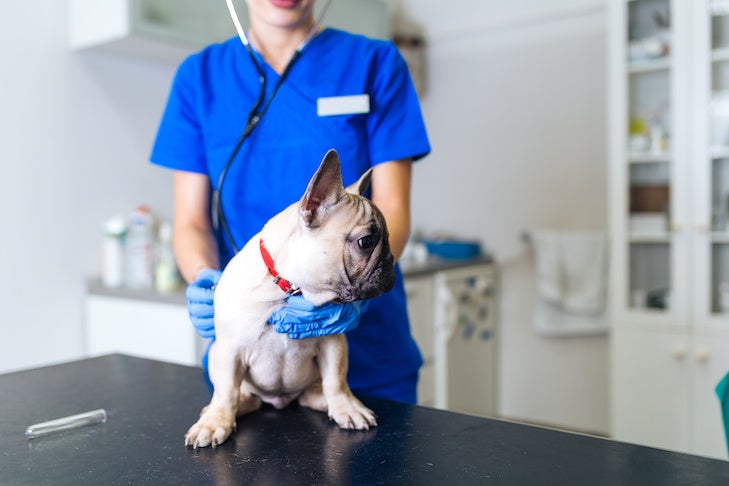
When TV’s Lassie became the first dog to be covered by a pet insurance policy issued in the United States, it was a good thing the famous Collie wasn’t limping. Because when it comes to getting health insurance, dogs, like people, usually can’t obtain coverage for their pre-existing conditions, though some providers do cover them.
The number of dog owners insuring their pets is increasing: 20% of dog owners have pet insurance for their dogs, up from 15% in 2018, according to the American Pet Products Association (APPA) 2021-2022 National Pet Owners Survey. In 2020, the North American Pet Health Insurance Association (NAPHIA) reported that 3.1 million pets were insured, and approximately 83% of those were dogs.
Why Is Interest in Pet Insurance Growing?
Veterinarians’ costs are going up as veterinary medicine offers new treatment options and becomes more technologically advanced. Conditions like orthopedic problems, hip dysplasia in dogs, chemotherapy, cataract surgery, etc. The possibilities for treating our canine pets today are sometimes miraculous and often expensive.
More than 90% of APPA survey respondents took their dog for at least one visit to the veterinarian in the last 12 months, with some pet owners saying they made three visits during the year. Consumer spending on veterinary care and medical products has risen every year for the last 20 years.

With dog owners making more visits to the vet, buying more medications, and choosing advanced diagnostics and corrective surgeries, pet insurance sounds like a no-brainer. However, pet insurance is a financial investment, and insurance costs have increased to match the increases in the cost of veterinary care.
The average annual pet insurance cost for accident and illness coverage was $636 a year for a dog in 2023. The average annual cost for accident-only coverage was $204. The age and health of your dog, as well as your location and the coverage option you choose will determine the actual cost.
Before you sign up for pet insurance, the American Veterinary Medical Association recommends that you find out how the provider defines and handles pre-existing conditions, including any diseases and conditions your pet has now or had in the past.
Pre-Existing Conditions Depend on the Provider
The National Association of Insurance Commissioners explains that most pet insurance companies exclude pre-existing conditions and hereditary or congenital conditions from coverage.
If you research insurance plans, it will help to understand what the following terms mean:
Pre-existing conditions: These are not usually covered by insurance, and they include any illness or injury that occurred or reoccurred, existed or showed symptoms, whether diagnosed by a veterinarian, prior to enrollment or during the waiting period of the insurance policy.
Medical history reviews: These are what an insurance company will require before determining what your coverage will cost and whether your dog has any pre-existing conditions that they won’t cover. This usually includes an exam by the veterinarian and a review of records of the dog’s health.
Curable or chronic (incurable) conditions: These are differentiated by some insurance companies. If a pre-existing condition is curable and was resolved, it is likely to be covered, versus a chronic condition that is incurable and likely to occur again.
Bilateral injuries or conditions: These can affect both sides of the body. Dogs who experience conditions such as cruciate ligament ruptures of the knee joint are more likely to rupture the ligament in the other knee. Many insurance companies stipulate if your dog has a bilateral condition before insurance takes effect, they will not cover the same injury on the other side of the body, even if it occurs once the insurance policy kicks in.

Insurance Companies May Identify These Conditions as Pre-Existing
Please keep in mind that the following examples do not apply to all policies. It’s important to read how any insurance company you’re considering defines pre-existing conditions.
- Your dog is constantly licking her paws pre-policy and is later diagnosed with allergies. The allergies are considered pre-existing and are not covered.
- Chronic conditions, if previously diagnosed, such as arthritis, diabetes, epilepsy, thyroid problems, heart conditions, gastrointestinal conditions, skin and ear conditions, may not be covered.
- Degenerative conditions, if previously diagnosed, such as joint or ligament deterioration, may be excluded from coverage.
- If your dog has been diagnosed with or has shown symptoms of the following conditions prior to enrolling, any related recurrence may be excluded for 12 months from the date of the last episode. These include respiratory infections, urinary tract infections, bladder infections, vomiting, diarrhea, other gastrointestinal disorders, or canine cancer.
- If your dog has been diagnosed with a disease of an area of the body where the underlying cause was undetermined, any diagnosis of the same area within 12 months might not be covered.
Most Common Claims

The most common pet health insurance claims for dogs is stomach issues, according to the NAPHIA. Close behind this are skin conditions, ear and eye infections, pain, growth or lumps under the skin, UTIs, allergies, and cruciate ligament injuries. Some of these may be pre-existing conditions for your dog. Some plans also don’t cover certain geriatric conditions, offer only partial coverage for visits to specialists, or set maximum reimbursements per incident or per year.
There’s no magic formula that will tell you whether pet health insurance is right for you and your dog, according to the AVMA. It’s best to discuss it with your veterinarian and be sure to ask any insurance company you consider how it defines pre-existing conditions that won’t be covered.
Lemonade pet insurance offers customizable policies for cats and dogs, so you can rest assured big-ticket vet bills won’t catch you by surprise. A base policy covers diagnostics, procedures, and medications for unexpected accidents and illnesses. Plus, you can opt for preventative care and add-ons, so you can tailor your pet’s perfect policy.
This article is intended solely as general guidance, and does not constitute health or other professional advice. Individual situations and applicable laws vary by jurisdiction, and you are encouraged to obtain appropriate advice from qualified professionals in the applicable jurisdictions. We make no representations or warranties concerning any course of action taken by any person following or otherwise using the information offered or provided in this article, including any such information associated with and provided in connection with third-party products, and we will not be liable for any direct, indirect, consequential, special, exemplary or other damages that may result, including but not limited to economic loss, injury, illness or death.


